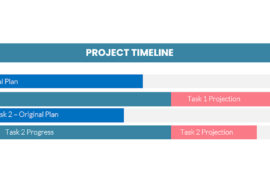 ERP deployments seek to be the core business system for all business functions but they virtually always start at the center of the Finance department. ERP firms, a niche with a tiny home in 1995 became a behemoth of an industry by the end of the 90’s as some firms became desperate to abandon old non-integrated systems in favor of a complete solution that would be not only Y2K compliant but more effective at the same time.
ERP deployments seek to be the core business system for all business functions but they virtually always start at the center of the Finance department. ERP firms, a niche with a tiny home in 1995 became a behemoth of an industry by the end of the 90’s as some firms became desperate to abandon old non-integrated systems in favor of a complete solution that would be not only Y2K compliant but more effective at the same time.
The wave towards major ERP deployments has continued unabate for the last decade. What those vendors have been doing to continue their growth has been fascinating and in many ways affects the project management world.
Core systems are, of course, defined differently for each firm but generally can be thought of this way: Production systems come first; If we can’t make the plant work, it doesn’t matter what paper work we can’t do. Next, core financial systems; General Ledger, Accounts Receivable (and Billing), Accounts Payable, Payroll. Finally, anything that is absolutely required to make the first 2 categories work.
When we talk about ERP deployments however, we start with a common manta for all vendors: “All systems – one place.” The idea is that everything will be integrated together and the first systems to be deployed by finance are always the 4 pillars of the financial environment: GL, AP, AR and Payroll. Production systems are typically left unmolested and unintegrated while these core modules are stabilized.
This leaves a lot of room for systems to not be included. Worse, with the penalties for non-compliance of core systems being the ultimate price, the only sensible course of action is to put a huge degree of testing on those core systems, abandoning much of the work that might otherwise have been placed on secondary systems.
As we all know, compliance of applications alone iss only half the battle. Virtually all hardware, operating systems, communications protocols etc has to be tested and validated as well, all making even more incentive to put aside for the moment the secondary systems not essential to the functionality of the core systems.
Once the core is stabilized, it’s time to extend. Secondary systems which might be working fine now become the targets for change in order to feed the mantra of everything in one place.
Just like the core systems, upgrades, changes and replacements will have to be prioritized. Systems may have been declared “secondary” yet, once missing can carry enormous impact on primary systems and on operations in general. After all, all of these systems; primary and secondary were presumably performing useful functions before the new ERP was deployed. You will have to look at what systems should be brought on-line before others; which resources you have available to complete the work and whether it might be better for your organization to put some of these secondary systems out of their misery altogether.
While I am sure that that some of these secondary systems have enormous impact on your organization, it is equally certain that some of them no longer fulfill a useful business purpose. It’s obviously silly to spend time, money and resource updating a system that makes no difference just because “we’ve always had it”. It’s often amazing to me to review systems that have been in place for many years only to find that no one uses the product from those systems.
Systems that we can consider secondary includes different categories for different organizations but inventory, human resources, electronic timesheets, fleet management, analysis, project management, CRM (customer relationship management) are some of those which are often targetted.
All the skills that IT managers and project managers have been able to put to use in effectively updating the core systems now come in handy as the attention turns to the other systems.
The news for IT managers is not, however, all good. The chief problem to be working on immediately is maintaining management support that was so essential in getting the core systems in the first place. Deploying an ERP can be such an exhausting experience for senior management that keeping their enthusiasm alive for the secondary systems may be an issue. Also, the success of the deployment of the ERP in the core systems may be a factor. If that project went over budget and schedule, it may be difficult to find the funds required to update secondary systems in a timely fashion. Even where these secondary systems have already been purchased, say as part of a global ERP implementation, the extensive resources required to deploy the secondary functionality may be hard to find money for.
One thing you can’t do is ignore the problem. If the intent was to take a working environment and gradually upgrade it as part of a centralized system then you’ve either got to make sure those secondary systems become part of the central core or that you adopt a ‘best of breed’ approach to building bridges from the central core to those systems.




